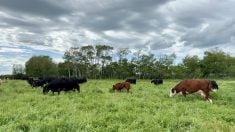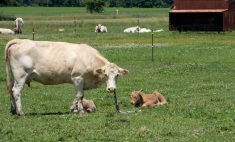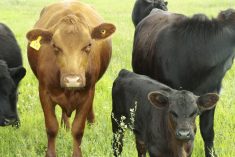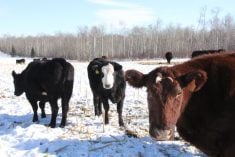As we move into spring, calving season is starting for some while for others it is well underway or nearing completion. To this point, your feeding program was likely directed at achieving optimal body condition at calving and ensuring that the nutritional needs of pregnancy were met. The next hurdle is ensuring that your post-calving feeding program meets the needs of lactation and facilitates an early return to breeding status in cows and heifers that recently calved. This article intends to examine factors that influence nutrient requirements of cows that have recently calved.
Read Also
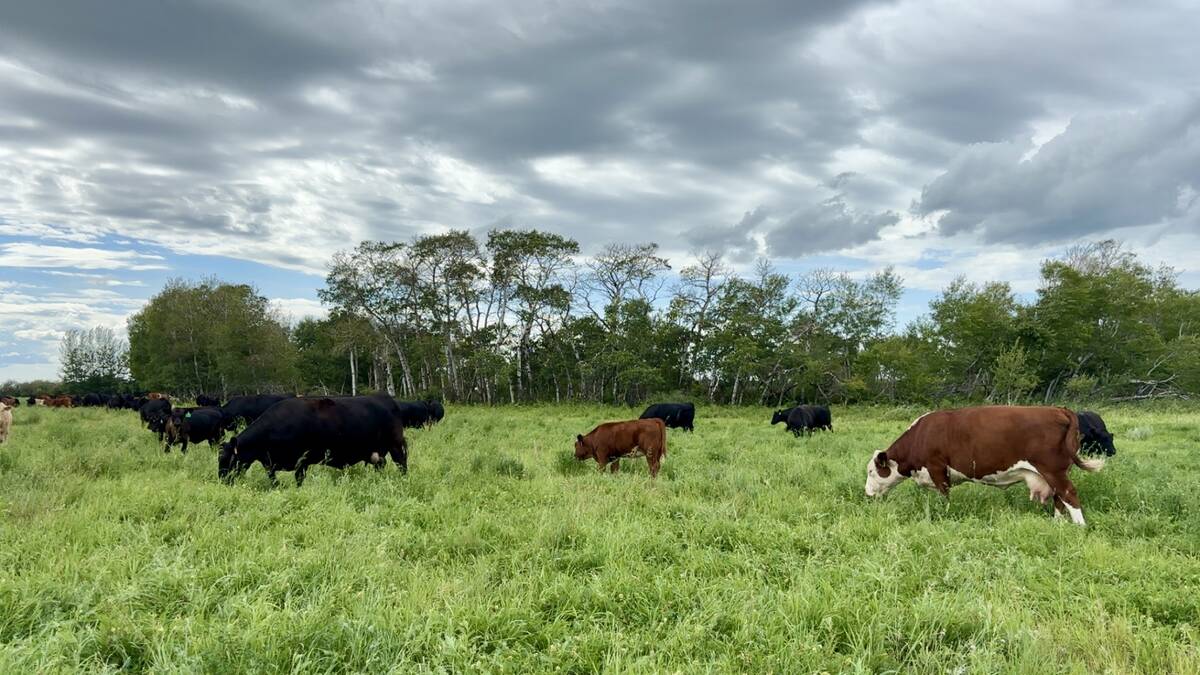
Preg-checking season is the perfect time to re-evaluate your beef cows’ nutrition
A look at three critical minerals that are often deficient in Canadian beef cow herds
Let’s start with colostrum formation, which begins several weeks before and peaks just before calving. As most of us know, the timing (i.e. within the first 12 hours of life) and volume of colostrum intake are critical for the development of immune function in newborn calves. Colostrum volume and quality (i.e. immunoglobulin concentration) are both affected by late gestation nutrition. Cows in good condition (i.e. 2.5 to 3.5 on a five-point scale) before calving and fed diets balanced for nutrients such as protein, trace minerals and vitamins will produce more colostrum of a higher quality than cows in poor condition and fed diets lacking in one or more of the essential nutrients.
Colostrum formation stops at calving and is followed by milk production. The quantity of milk produced typically increases over the first 60 days of lactation and declines thereafter. Peak milk production is influenced by factors such as breed and age of dam and depends largely on nutrient supply. Consider as an example a five-year-old, 1,400-pound cow, two months post-calving producing 20 pounds of milk. This cow, when fed at 2.2 per cent of body weight (DM basis) or approximately 31 pounds of DM, requires a ration that is approximately 65 per cent total digestible nutrients (TDN) and 11 per cent crude protein. Failure to supply a ration or pasture that provides enough of these two nutrients will limit her genetic potential for milk production and may limit the growth of her calf. Perhaps of greater concern is that in the face of inadequate nutrition, the cow will begin to use her body’s nutrient stores (i.e. fat, protein, minerals) to make up for the nutritional deficit and supply her calf with milk. The result is a loss in body weight and condition, which has serious consequences for the upcoming breeding season. These include a delay in the return to estrus or breeding readiness and/or poor first-service conception rates.
An early return to estrus and high first-service conception rates are both critical to maintaining a 365-day calving interval and ensuring a uniform calf crop. Ideally, most of one’s calves are born in the first 45 days of the calving season with the remainder coming over the next 21 days. While it is possible to achieve such a calving distribution with a sound breeding program, it is also possible to see calving stretch out over 90 days or more. The reason for such a range relates to the time it takes for a cow to recover from the stress of calving. The typical beef cow requires 30 to 40 days for her uterus to return to its normal shape and size and to “reset” the balance of hormones that control her estrus cycle. However, this recovery period can be extended significantly (i.e. 90 days or more) in cows in poor body condition or those that have lost weight post-calving. Inadequate post-calving nutrition will also harm first-service and overall conception rates. The combined effect is an extended breeding season and ultimately an extended calving season the following year. There is also the likelihood of more open cows and greater variability of calf weaning weights.
When it comes to meeting the post-calving nutrient requirements of first- and second-calf heifers, the situation is even more complicated. These animals are still growing and thus require additional nutrients than those required for maintenance and lactation. Failure to match nutrient supply with requirement means failure to rebreed and is one of the main reasons for the higher culling rate typical of this age group.
Finally, the above discussion focuses on meeting the energy and protein requirements of the lactating cow. It is, however, equally important to meet the mineral and vitamin needs during this period. Consider, for example, vitamin A. Milk is the primary source of this vitamin for the newborn calf. Inadequate vitamin A supplementation to the dam can result in vitamin A deficiency in newborn calves, without any apparent effect on dam health.
To close, if the above discussion has not convinced you about the importance of post-calving nutrition, then consider the cow’s perspective on the matter. If the environment you provide for her fails to meet her current nutritional needs and that of the calf at her side, then why the rush to rebreed?




